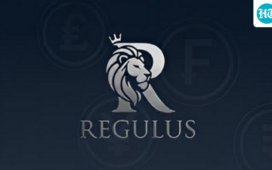What Is Forex System Trading?
A forex trading system is a method of trading forex that is based on a series of analyses to determine whether to buy or sell a currency pair with pre-set procedures to determine the entry and exit points as well as risk management criteria.
Key Takeaways
- A forex trading system is a rules-based approach for trading currencies.
- Forex trading systems can be automated as they are essentially just algorithms that a trader runs based on the market signals.
- Forex traders often find developing and tweaking their own system an important part of the learning curve.
Understanding Forex System Trading
Forex system trading is a strictly rules-based approach to trading. First, a trader picks an overall strategy or style to follow and then identifies the signals and inputs that should prompt a trade. Once the trade is identified, everything that follows is set out by the forex trading system.
Depending on how developed the system is, this may simply mean where to set the stops and when to realize profits or it can be more complex and include follow-up actions in separate asset classes like options to increase or hedge positions as the market trend continues to develop.
Forex system trading can be based on a set of signals derived from technical analysis charting tools or fundamental news-based events.
Automated vs. Manual Forex System Trading
Forex trading systems can be either manual or automated. For most day traders, a forex trading system is usually made up of technical signals that create a buy or sell decision when they point in a direction that has historically led to a profitable trade.
The system is generally comprised of a trading plan that outlines what a trader should do when the signal is identified and a trading journal (report) that captures what was done and why for future analysis and refinement of the system. This is manual forex system trading that anyone can engage in.
Running a manual system involves sitting at the computer screen, looking for signals, and interpreting your results to decide what to do.
In an automated forex trading system, the trader teaches the software what signals to look for and how to interpret them. It is thought that automated trading removes the emotional and psychological components of trading that often lead to bad judgment. Automated forex system trading also tends to reduce human error and reduce reaction time when certain levels are breached. More complex automated systems also come with common strategies and signals loaded in so the trader can combine several approaches in their system with relative ease.
Forex System Trading: Black Boxes and Holy Grails
Both automated and manual day trading systems and signals are available for purchase. That said, when it comes to manual systems traders sometimes find the process of developing their own part of the learning curve to becoming an effective trader. It is important to note that there is no such thing as the holy grail of trading systems.
If the system was a perfect money maker, the seller would not want to share it. This is why large financial firms keep their black box trading programs under lock and key. They have invested significant capital in developing a system that can produce profits, and sharing that model widely would remove their competitive edge.





